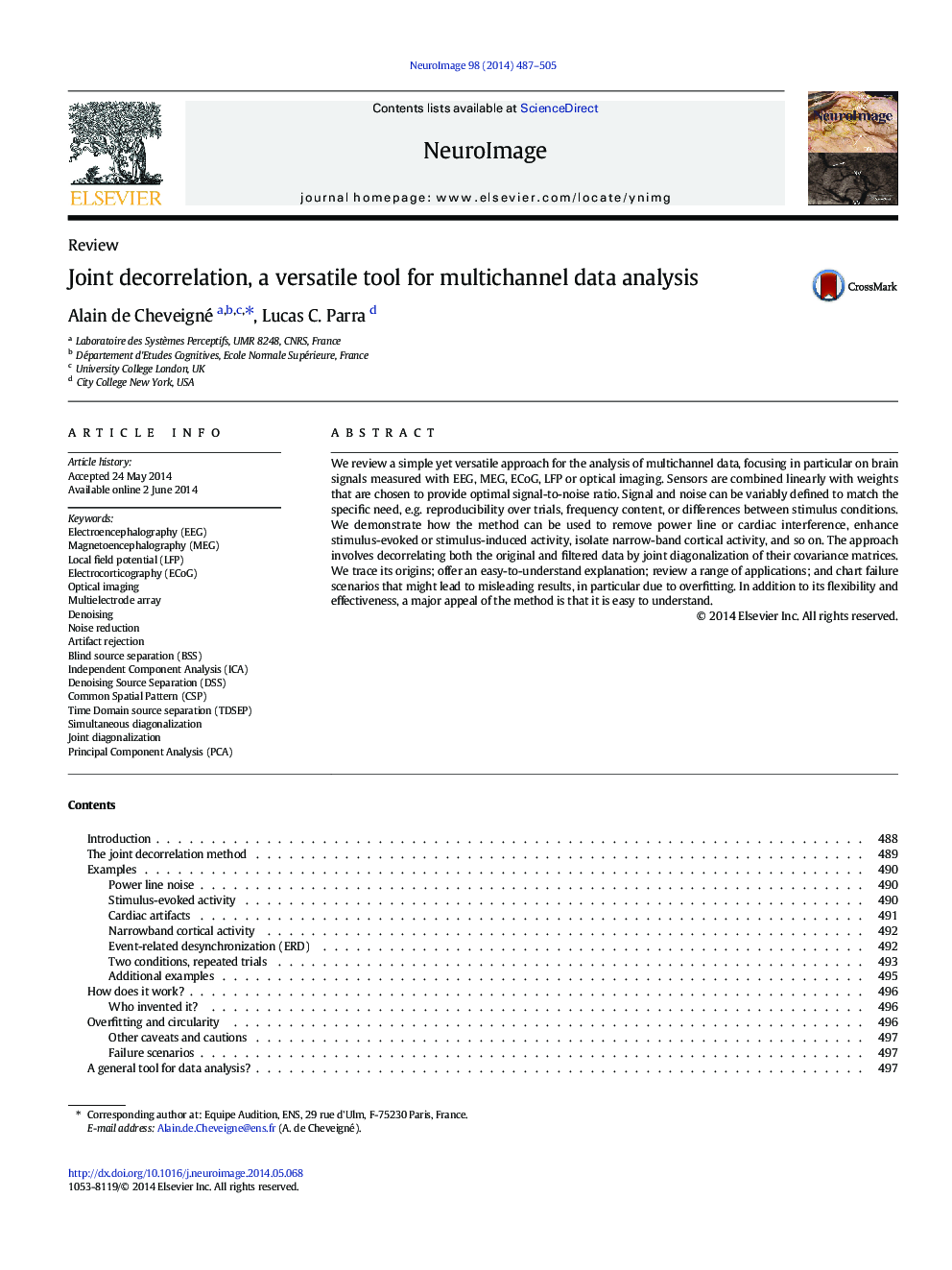| Article ID | Journal | Published Year | Pages | File Type |
|---|---|---|---|---|
| 6027010 | NeuroImage | 2014 | 19 Pages |
Abstract
We review a simple yet versatile approach for the analysis of multichannel data, focusing in particular on brain signals measured with EEG, MEG, ECoG, LFP or optical imaging. Sensors are combined linearly with weights that are chosen to provide optimal signal-to-noise ratio. Signal and noise can be variably defined to match the specific need, e.g. reproducibility over trials, frequency content, or differences between stimulus conditions. We demonstrate how the method can be used to remove power line or cardiac interference, enhance stimulus-evoked or stimulus-induced activity, isolate narrow-band cortical activity, and so on. The approach involves decorrelating both the original and filtered data by joint diagonalization of their covariance matrices. We trace its origins; offer an easy-to-understand explanation; review a range of applications; and chart failure scenarios that might lead to misleading results, in particular due to overfitting. In addition to its flexibility and effectiveness, a major appeal of the method is that it is easy to understand.
Keywords
DenoisingCommon spatial pattern (CSP)Multielectrode arrayPrincipal component analysis (PCA)Electrocorticography (ECoG)ICA, Independent component analysis Optical imagingJoint diagonalizationSimultaneous diagonalizationBlind Source Separation (BSS)Artifact rejectionMagnetoencephalography (MEG)Electroencephalography (EEG)Local field potential (LFP)Noise reduction
Related Topics
Life Sciences
Neuroscience
Cognitive Neuroscience
Authors
Alain de Cheveigné, Lucas C. Parra,
